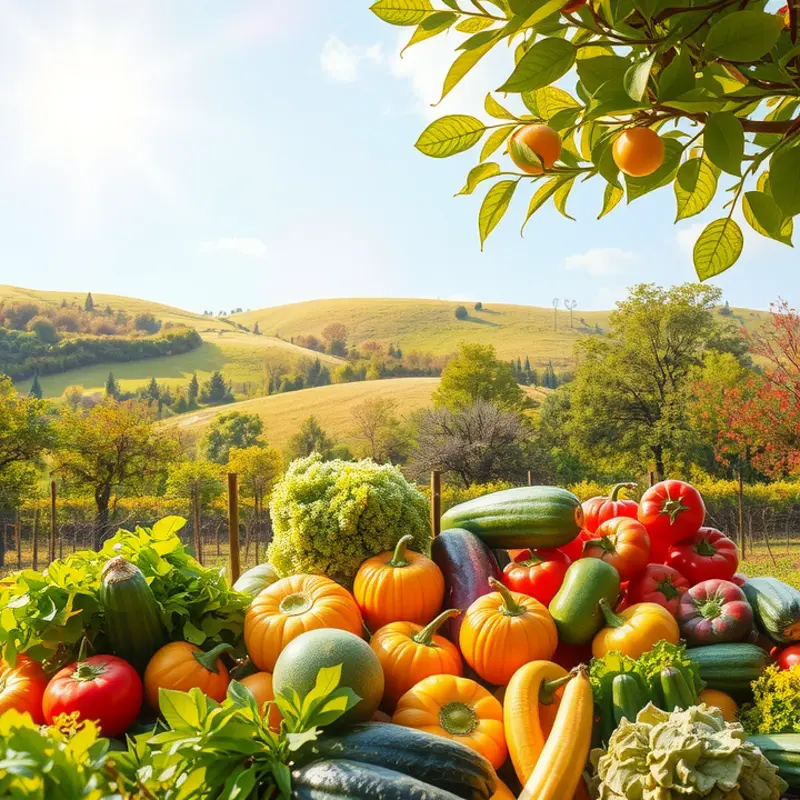Cooking vegetables can be an art and a science, making it essential for any home cook to master. From boiling to roasting, these techniques not only enhance flavor but also preserve nutrients. Whether you are a beginner or an experienced chef, you’ll benefit from knowing how to prepare and cook vegetables effectively. This guide aims to simplify various techniques, empowering you to elevate your vegetable dishes and diversify your meals.
Fundamental Methods for Cooking Vegetables

Mastering the cooking of vegetables begins with understanding their varied preparation methods that not only enhance their flavors but also preserve their nutrients and vibrant colors. Techniques like blanching, sautéing, and steaming are indispensable for any kitchen enthusiast.
Blanching is a method that involves briefly cooking vegetables in boiling water, then plunging them into ice water to halt the cooking process. This technique is particularly useful for peeling tomatoes or almonds easily and helps maintain the vegetables’ vivid colors and nutritional value. To blanch successfully, ensure the water is rapidly boiling and well-salted. The salt helps season the vegetables uniformly. Pay attention to timing; usually, a minute or two is sufficient. Follow with a cold water bath to prevent overcooking.
Steaming is another gentle yet effective method for cooking vegetables. This technique uses moist heat to cook, preserving nutrients and color. Unlike boiling, where nutrients can leach into the water, steaming retains most of the goodness within the vegetable. Use a steamer basket over simmering water, ensuring that the vegetables do not touch the water. Covering them with a lid allows the steam to circulate evenly. For ideal flavor, season the water with herbs or aromatics. Timing varies with each vegetable; softer ones like spinach need only a few minutes, while harder ones like carrots may require up to 10 minutes.
Sautéing is ideal for achieving a quick cook with a slight caramelization that highlights the natural sugars in vegetables. Heat oil in a pan until shimmering, then add vegetables cut into uniform sizes. This ensures even cooking. Maintain moderate heat to avoid burning, and toss the vegetables frequently. Season towards the end to cater to your taste preferences. A touch of acid, like lemon juice, can also elevate the dish, bringing out the freshness and creating a delightful balance.
An excellent practical application that blends these techniques can be found in recipes like Mediterranean Chickpea Salad, where blanching can prepare vegetables like green beans to keep them vibrant and crisp.
The effectiveness of these methods extends beyond just simplicity; it’s about enhancing the natural qualities of vegetables. Mastery of these techniques allows you to approach any vegetable with confidence, knowing that you can coax out its best flavor and nutrition with just a few simple steps.
Creative Techniques to Elevate Flavor

Transforming vegetables from simple side dishes into mouthwatering highlights requires the mastery of advanced cooking techniques. Roasting, grilling, and stir-frying are key methods that enrich the natural flavors of vegetables. By adding texture and depth, these techniques can make vegetables the star of any meal.
Roasting:
Roasting is all about enhancing the natural sweetness of vegetables through caramelization. It involves cooking them in an oven at high heat, which draws out their sugars and condenses their flavors. For perfect roasting, cut vegetables into uniform pieces to ensure even cooking. Toss them with olive oil, salt, and a pinch of your favorite spices. Try adding cumin or smoked paprika for an extra layer of flavor. Spread them in a single layer on a baking sheet and roast at 400°F (200°C) until golden brown. The key is to avoid overcrowding the pan, allowing each piece to get crispy edges while remaining tender inside.
Grilling:
Grilling imparts a smoky, charred flavor that elevates vegetables’ taste uniquely. To maximize this effect, marinate vegetables like bell peppers, zucchini, and corn with a mix of olive oil, lemon juice, garlic, and herbs such as thyme or rosemary. Preheat your grill and place the vegetables directly over the heat. Be attentive and turn them frequently to prevent burning, aiming for grill marks and a slight charring. Thinly sliced vegetables grill faster and develop a lovely crisp on the edges, while denser vegetables like eggplant benefit from longer grilling to achieve a creamy texture.
Stir-Frying:
This method is perfect for preserving the crunch and vibrancy of vegetables while infusing them with flavor. Stir-frying requires high heat and constant motion, typically done in a wok. Start by heating a small amount of oil, such as sesame or peanut oil, which both add a nutty flavor. Add aromatics like ginger or garlic to the hot oil to create a fragrant base. Introduce vegetables cut into thin, uniform pieces for quick and even cooking. Continuously toss the vegetables, adding soy sauce, a splash of rice vinegar, and sesame seeds for a savory finish. Timing is crucial—cook just long enough for the vegetables to brighten in color and remain crisp.
Seasoning and Fresh Herbs:
Seasoning and fresh herbs can significantly enhance the flavors achieved through these techniques. Fresh herbs like basil, cilantro, and parsley bring brightness and contrast to hearty roasted vegetables. Sprinkle a handful of fresh chopped herbs before serving, allowing the residual heat to release their essential oils. Combining herbs with spices further ensures a memorable taste experience. For example, a dash of coriander complements roasted carrots beautifully, while grilled asparagus pairs with lemon zest and dill.
Explore these techniques and play with seasoning combinations to inspire culinary creativity. Whether you’re grilling skewered vegetables for a summer cookout or stir-frying a quick weeknight meal, each method offers a pathway to discover the full potential of vegetables. For more vegetable inspiration, consider trying Zucchini Noodles with Avocado Pesto.
Final words
Cooking vegetables using the right techniques can truly enhance your culinary skills and bring variety to your meals. By mastering fundamental methods like blanching and sautéing, you’re laying the groundwork for versatile vegetable dishes. As you explore more creative techniques such as roasting and grilling, you’ll discover how to bring out the natural flavors in your ingredients. Remember, the key to great cooking is often experimentation and creativity. Don’t be afraid to try new combinations and methods; each experience will contribute to your growth as a home cook.







